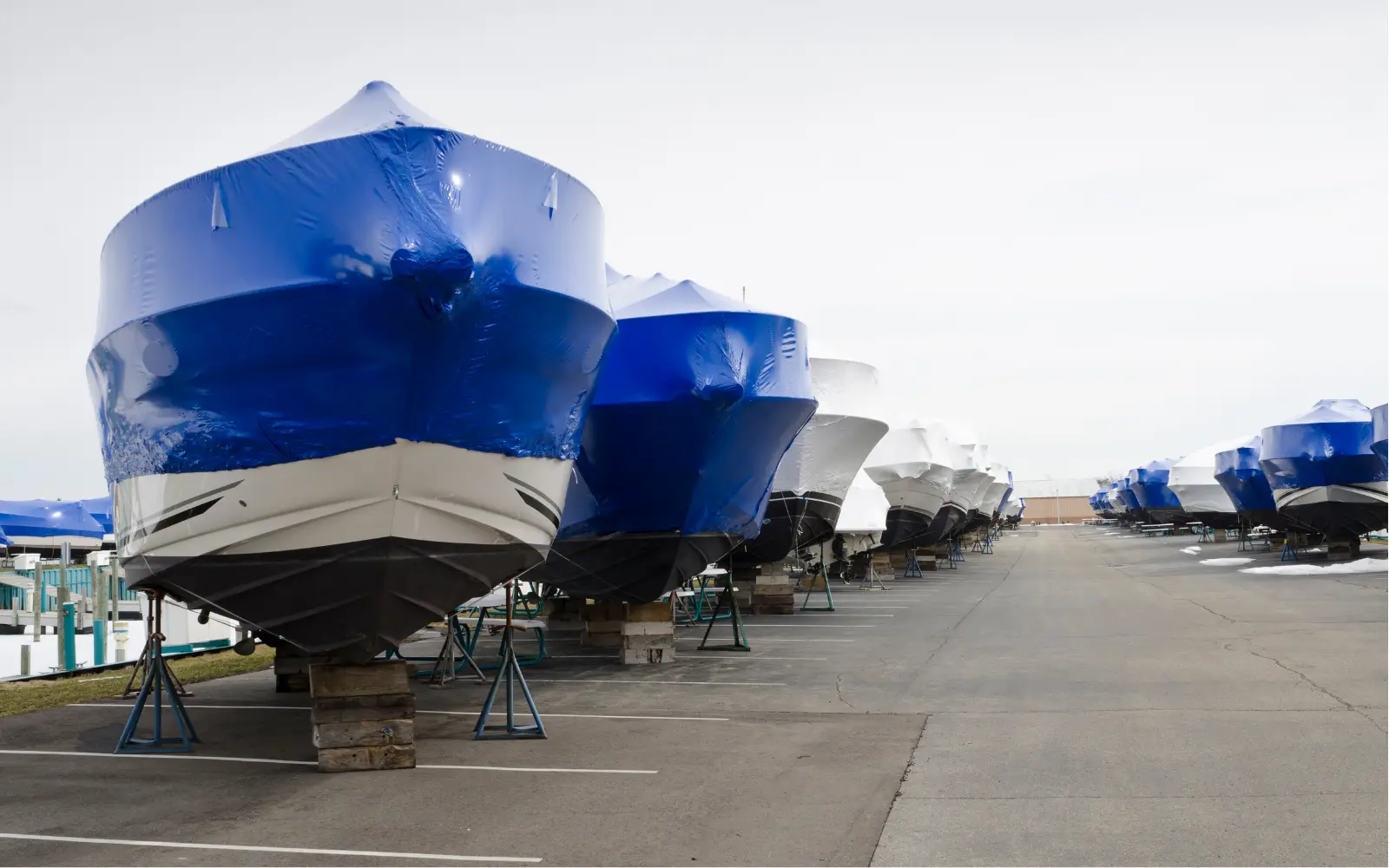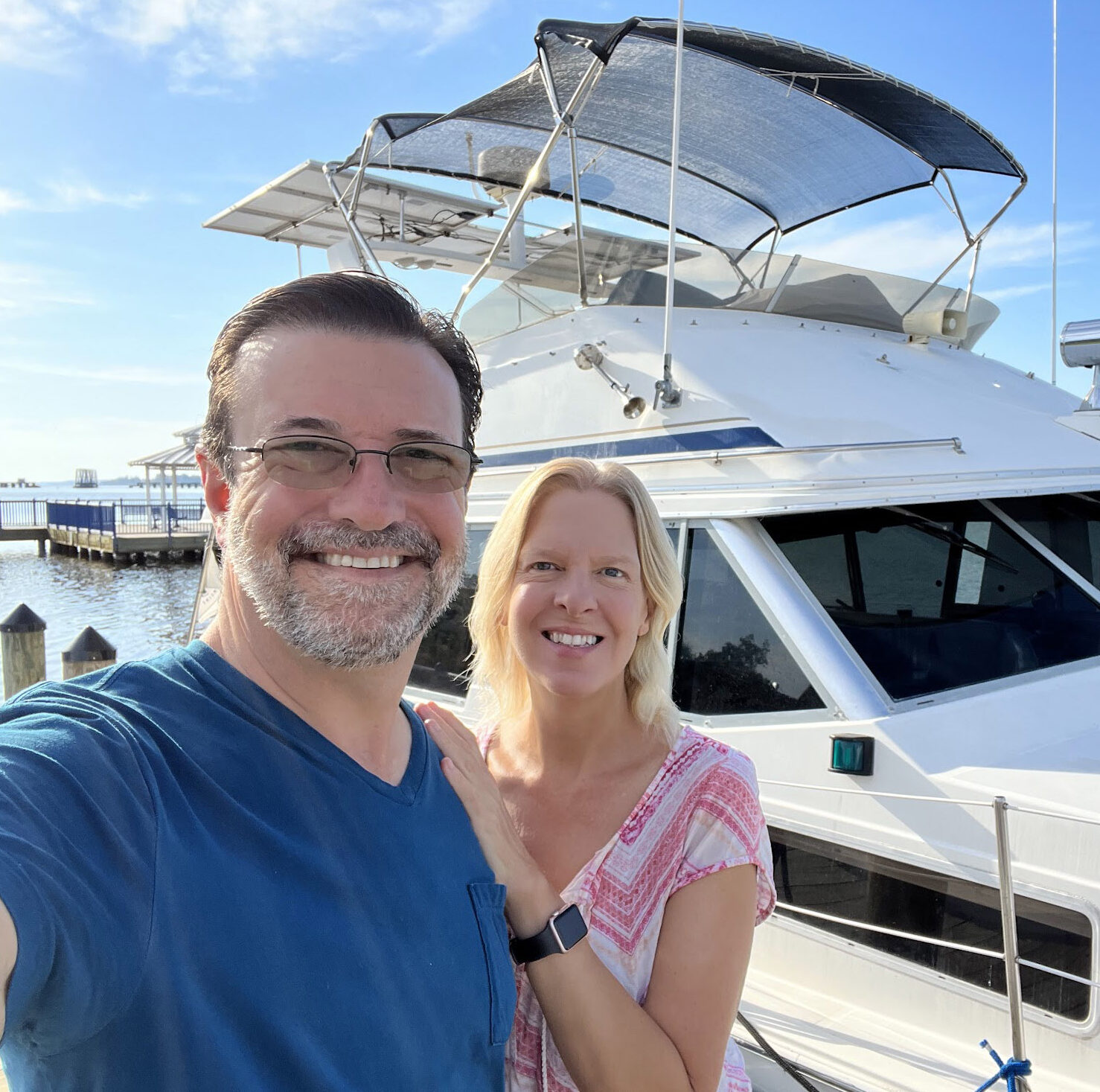I haven’t always been a full-time cruiser. I came to this lifestyle almost accidentally.
Stacey and I lived in Portland, Maine, where the Presumpscot River meets the Atlantic Ocean, and had a 14-foot Old Town canoe we were quite pleased with. It required almost no maintenance. Winterizing meant making sure it was properly blocked off the ground and upside down. I am a life-long boater, having grown up on my grandfather’s classic 28-foot Chris-Craft, and my family had a lake cottage where I kept my first boat when I was 11, but the canoe was my connection to “the life” at that time.
We were invited by new friends, Leah and Steve, for a day out on Maine’s second largest lake, Sebago Lake, on their 28-foot Carver flybridge cruiser, The Black Pearl. We jumped at the chance, and we weren’t more than a half mile off the dock when Stacey turned to me and said, “We should have one of these.” We sold the canoe.
That fateful boat trip over a decade ago changed our lives. For the first few years, we were boating in Maine waters on our own Carver. And while we were dedicated to spending as much time on the water as we could, at least half the year the boat needed to be laid up for the depths of winter.
Unless you boat like we do now—remaining mostly underway and boating wherever the weather seems nicest (avoiding the cold of the north in the winter and hurricane alley in the summer)—periods of layup are simply a necessary evil. We got really good at preparing our boats to weather a Maine winter outside in a boatyard. Depending on where you are, these preparations might look a bit different. In the upper Midwest, boats are often stored inside climate-controlled buildings. In Florida, the off season for many is in summer, and boats on stands are often secured so storm-force winds can’t topple them. In places where the climate is more forgiving and storm threats are lower—like the Chesapeake Bay, the Pacific Northwest, the Carolinas, or along the western rivers—in-water layup is common. Each approach has its own considerations, but I’ll try to hit the universal points as best I can.
Mind you, I will not get into methods for engine, air conditioning, or potable water systems layup. Methods for those systems are well covered on YouTube videos and technical manuals, and in areas that freeze, a mistake can be very costly. If you are unsure of your skills or methods for laying up these main systems, hire or consult a professional and make sure you’re doing it correctly with the correct materials. Regardless of methods or climate, before layup is the time to change the oil. Laying up with old oil is bad for the internals of the engine. There are products marketed as oil stabilizers for storage, but be careful—not all products marketed as “oil stabilizers” are intended for this purpose, so shop carefully. If you absolutely cannot change the oil before layup, these specialty additives formulated for short-term storage are better than nothing, but the best practice is still to change the oil as part of layup.
Keep Water Out
The most important point, whether you’re worried about freezing or mold/mildew, is that keeping water off and out of the boat is critical. Dry, dewatered, and dehumidified is the main goal. Almost all damage during layup comes down to water infiltration, and boats can hold water as well as they float on it.
Drain: If your boat has a drain plug or garboard drain, pull it once the boat is high and dry, and make sure the boat is positioned “on the hard” to drain toward it. Larger boats often don’t have one—so run bilge pumps until they can’t pump any more, then use a wet/dry vac to finish the job.
Cover: If your boat sheds water to the bilges during rain or snow, and if you don’t have a custom boat cover adequate to the climate conditions, tarp or shrink-wrap so water cannot get in. Shrink-wrap is generally considered best for outdoor storage, protecting against both weather and sun damage.
In-water layup: Boats left in the water need extra vigilance. Check lines and fenders regularly, ensure bilge pumps are operational, and perhaps consider a bubbler in climates that might see surface ice if the marina doesn’t provide one. A good winter cover can still help keep water and debris out while reducing UV damage. Pro tip: Small submersible sump or utility pumps can be dropped directly into the water (with marina approval)—secure them with a rope rather than relying on the power cord for support. Do not connect a hose to the output; the pump will keep water moving and help prevent ice from forming around the boat. It’s a low-cost alternative to a dedicated, expensive bubbler system and works well in mild freezing conditions or temperate climates. Make sure pumps are rated for continuous or extended duty to avoid damage during a prolonged in-water layup.
Control Humidity
If your boat will be connected to shore power during layup (and the yard allows it), consider running a dehumidifier that drains overboard, perhaps via a sink that drains directly to a through-hull. A few small fans will also help keep air moving inside. Without power, you’ll need passive methods:
- Commercial products: DampRid and similar absorbers work well, but use caution. The liquid brine that collects in their tubs or bags should never be poured down a boat drain—it can discolor gelcoat. Handle and dispose of it carefully off the boat.
- DIY solution: My preferred method is cheaper, cleaner, and just as effective. Fill hardware-store buckets or smaller containers, like plastic paint mixing tubs, halfway with cat litter, then top with calcium chloride rock salt—the same active ingredient used in DampRid. Avoid the pelletized calcium chloride sold as de-icer—it tends to form a solid mass when damp, preventing water from filtering down. With this setup, there’s no liquid reservoir to spill and make the ungodly mess that DampRid sometimes can. Plus, it costs far less than buying the prepackaged commercial tubs. Place these buckets around the cabin, especially in damp condensation-prone areas or in areas such as hanging lockers that need to be dry, to sequester moisture from the air in extreme climates and prevent mold and mildew growth.
Batteries
There are two main schools of thought:
- Remove and store: Bring them home for charging, maintenance, and climate-controlled storage.
- Fully charge and disconnect: Leave them aboard but disconnected.
- What not to do: Don’t leave them connected unless they’re maintenance-free and you have a smart maintainer or charger running. LiFePO4 batteries need special consideration—check the manual. A safe default is to store them at ~80% state of charge in a climate-controlled environment without a charger connected.
Fuel
This is one of those “ask three boaters, get three answers” topics. Some prefer full tanks to minimize condensation. Others prefer nearly empty. Either way—treat it.
Diesel: Add an appropriate bactericide to prevent microbial growth.
Gasoline: Use a good marine fuel stabilizer to prevent phase separation.
Layup Cleanup for Easier Recommissioning
Before leaving your boat for the layup period, take a few minutes to tidy up and organize. Wipe up spilled fluids. Remove/stow loose items that could trap moisture or get damaged. Secure lines, fenders, and any temporary supports. Record on a prominently-located notepad where things are placed so you (or a helpful friend) can easily remove or check things later, and this makes an excellent starting draft for your decommissioning and recommissioning checklists (Hopefully you’re using Argo’s checklist feature to help with this!). Wipe down surfaces, clean up any visible salt or grime, and double-check that covers or shrink-wrap are snug and secure. These small steps reduce the risk of mold, mildew, or corrosion and make spring recommissioning much simpler. A tidy boat at the end of layup prep saves headaches later.
Final Thoughts
Regardless of where you are laying up, the basics are the same: keep water out, keep air dry and moving (if possible), care for your batteries, and treat your fuel. Every boat and every location is a little different, but the goal never changes—prevent damage now, and make recommissioning a whole lot easier.




